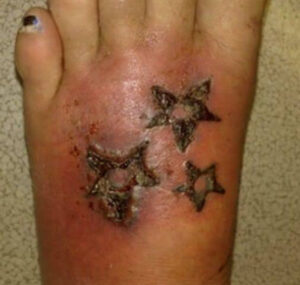
Numbing creams have become increasingly popular, especially in the tattoo world, cosmetic procedures, microneedling, waxing, and even minor dermatological treatments. These topical anesthetics promise to take the edge off the pain, and for many, they truly help. But while the idea of a pain-free experience is appealing, it’s essential to understand that numbing creams aren’t entirely risk-free.
Let’s break down the potential side effects and what you should watch out for before reaching for that tube of topical relief.
1.
Skin Irritation
One of the most common side effects of numbing cream is skin irritation. Redness, itching, dryness, or a burning sensation can occur, especially if the cream is left on for too long or applied to sensitive skin. While these reactions are usually mild, they can be uncomfortable—and may affect how your skin heals, particularly after a tattoo or cosmetic procedure.
2.
Allergic Reactions
Some people may have an allergic reaction to ingredients in numbing creams, such as lidocaine or benzocaine. Signs of an allergic reaction can include hives, swelling, intense itching, and in rare cases, difficulty breathing. Always do a patch test before applying the cream to a large area of your body. If you experience any unusual symptoms, seek medical attention immediately.
3.
Skin Discoloration
Extended use or over-application can lead to temporary skin discoloration, especially in people with darker skin tones. The treated area might appear lighter or have a blotchy look, though this typically fades over time.
4.
Delayed Healing
When used before tattoos or skin procedures, numbing creams can sometimes interfere with how your body responds to the treatment. This might slightly slow the healing process or affect how a tattoo sets into the skin, especially if too much product is used or it isn’t fully removed before the procedure.
5.
Systemic Absorption
Though rare, applying large amounts of numbing cream—especially over large areas or broken skin—can lead to the active ingredients being absorbed into the bloodstream. This may cause serious side effects like dizziness, blurred vision, irregular heartbeat, or even seizures in extreme cases. This is more common with improper use, such as using plastic wrap to “trap” the cream for extended periods.
Final Thoughts:
Numbing creams can be incredibly helpful when used correctly, but they’re not without risk. Always follow the manufacturer’s instructions, use them sparingly, and consult with your tattoo artist or skincare professional if you’re unsure. When in doubt, test it out—your skin (and safety) should always come first.
Don’t let a little pain turn into a big problem—use smart, stay safe, and enjoy your experience.
Leave a Reply